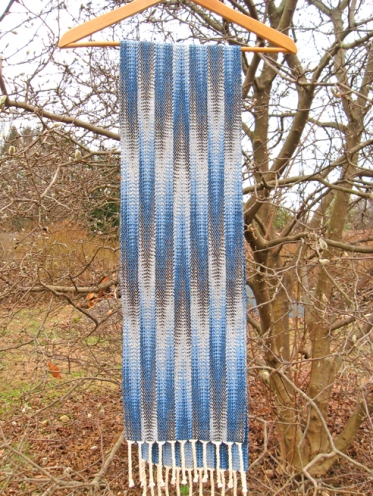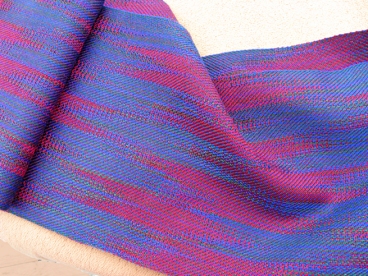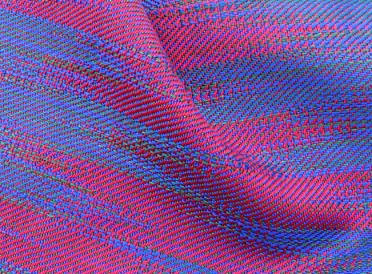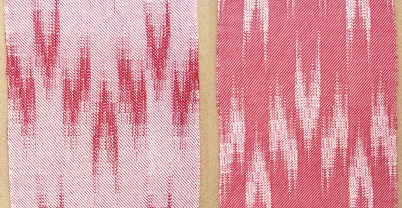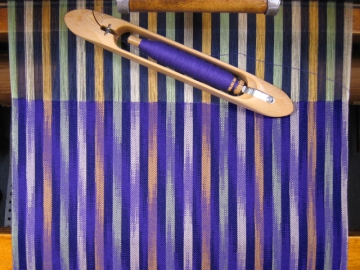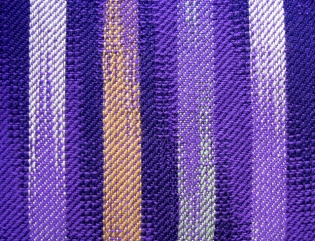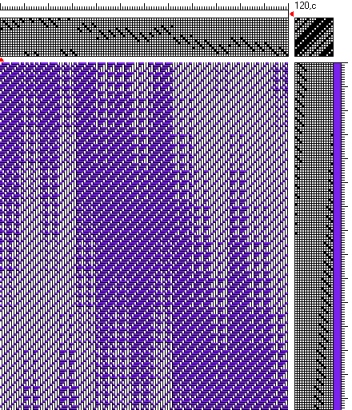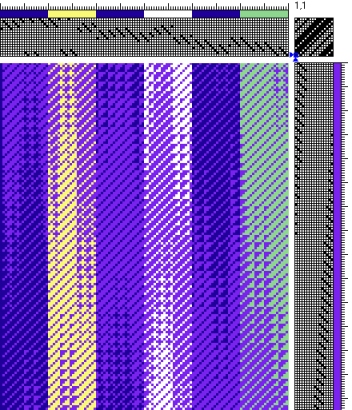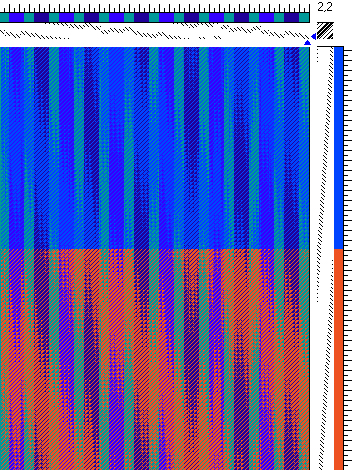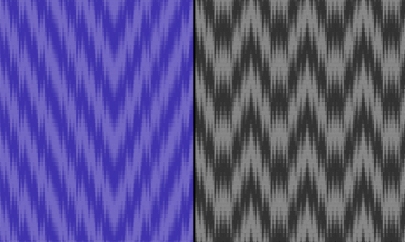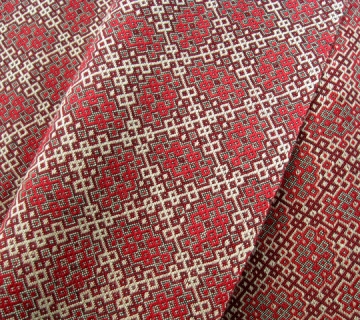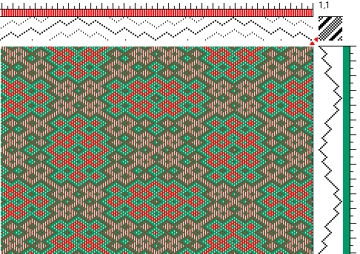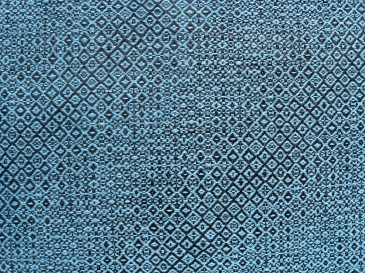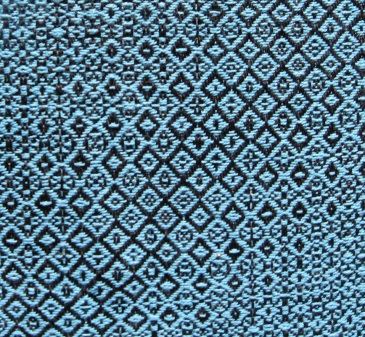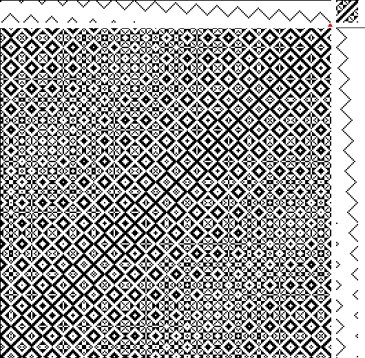Several years ago I explored “faux” or “false” ikat by designing network drafted twills. I shared what I learned in a blog post and also in more detail in an article I wrote, “Ikat-Inspired Twill Studies,” published in the Complex Weavers Journal, issue #104 (February 2014). I decided to come back to this interesting topic and experiment some more. Here is how it turned out:
Below is a partial close-up of the draft I designed for this scarf. I often start with pattern or design lines and then network them. In this case I also interleaved the networked treadling, and the longest float is 4. I used a white warp (20/2 cotton, 2 strands together, at 28 epi) and alternating black and blue weft (20/2 cotton, 2 strands together). The gradual blending of these three solid colors works well, and the overall design reminds me of a waterfall.
Next is another scarf I designed that I tied on to the same warp as the previous one.
Below is a partial close-up of the draft I designed for this scarf. The treadling is networked with no interleaving, and the longest float is 3. I used lustrous yarns: 8/2 Tencel for the warp, mostly blue with randomly placed green and purple at 28 epi, and 10/2 red pearl cotton weft, all are solid colors. This scarf is iridescent – the colors appear to change as the angle from which it is viewed changes. I often see iridescence in nature, such as when the humming birds come in the summer to drink nectar from their favorite red, tubular flowers of the Cardinal Climber vine in my garden. At times the hummers appear to have a dull, lusterless color, but as they whiz around in the light they keep on transforming into brilliant colors. If you are interested to learn more about iridescence especially as it relates to weaving, I recommend an informative and inspiring book by Bobbie Irwin, Weaving Iridescence – Color Play for the Handweaver.
I designed many drafts and wove samples before weaving these scarves. Here’s one of the samples showing both sides of the cloth:
Below is a partial close-up of the draft for this sample.
Lastly, below is a draft of an 8-shaft version that I designed, but the ikat effect is too subtle. I think it’s a nice draft anyway. Click on it to see it enlarged.
I hope you enjoyed this post and are inspired to experiment with faux/false ikat. Perhaps you might be inspired to design and weave true ikat using dyeing techniques…maybe I should try it someday!
See you next time!
